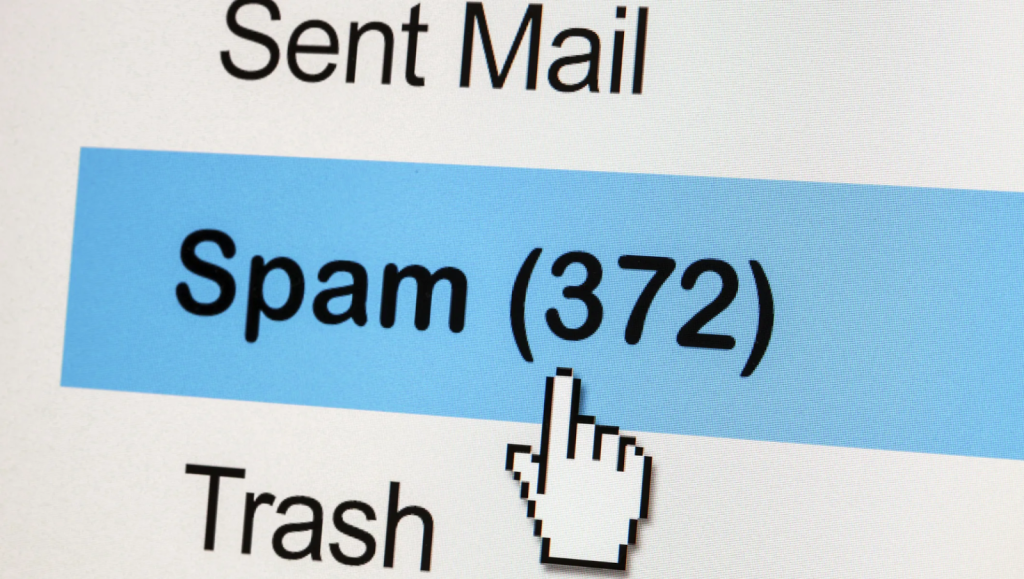Seeing messages from a dating site pop up on your husband’s phone can be unsettling. Does it mean he’s using them? Not necessarily.
Spam and unwanted messages are everywhere, especially online. Let’s break down eight possible reasons why your husband is receiving these texts and emails—and whether there’s cause for concern.

1. Spam Messages Are Just That—Spam:
Random dating site emails don’t always mean he signed up.
Spam is annoying, and dating sites are some of the worst offenders. Many of these messages target email addresses at random, meaning your husband could be receiving them without ever signing up.
Why does this happen? Spammers use databases of publicly available contact information to send bulk emails. If the message looks generic and doesn’t reference his name or any interactions, it’s likely just spam.

2. He Has an Active Account on a Dating App:
The most obvious possibility—he’s using the site. If the messages mention new matches, messages, or interactions, it could mean he has an account. If you notice notifications referencing his name, profile activity, or personalized content, he may have an active subscription or free account.
3. It’s from an Old, Forgotten Profile:
Inactive accounts don’t just disappear.
Many people sign up for dating apps and forget about them. If he never deleted his account, the site may still send promotional emails or match updates.
What to check:
- Is the email generic, or does it reference his name or activity?
- Does he remember creating an account?
If it’s from an old account, the solution is simple—log in and delete it permanently.
4. His Email Was Sold to Third Parties:
Marketing data gets shared—sometimes without us knowing.
Many online services sell user data, including email addresses, to third-party companies. This means he might be receiving dating site emails without ever signing up.
How does this happen?
- Signing up for an unrelated service that shares emails with advertisers.
- Clicking “Agree” on terms of service without reading the fine print.
Solution: Use email privacy tools to prevent unwanted marketing emails.
5. A Virus or Malware Is Sending Spam:
His device may be compromised.
If spam dating messages suddenly spike in frequency, it could mean his device is infected with malware. Clicking on sketchy links can trigger spammy notifications from dating sites, adult sites, or fake promotions.
How to fix it:
- Run an antivirus scan.
- Clear cache and cookies from his browser.
- Avoid clicking unknown links.
6. Someone Else Used His Email to Sign Up:
It’s possible his email was used by someone else.
Believe it or not, people sometimes use someone else’s email to bypass bans on dating sites or create anonymous accounts.
Possible scenarios:
- A friend or coworker used his email to sign up.
- His email was mistyped by another user.
What to do: If he’s receiving emails meant for someone else, reset the password and check for unauthorized logins.
7. It’s Just a Generic Promotion:
Not all dating site emails mean an account exists.
Gmail, Yahoo, and other email providers categorize promotions separately, sometimes including emails from dating sites. If his inbox is full of generic “Sign Up Now” ads, it’s just marketing spam.
Quick Fix:
- Mark emails as spam.
- Block the sender.
- Unsubscribe from promotional messages.

8. Clickbait from Fake Websites:
Some websites use deceptive ads to push dating services.
Websites with pirated content, adult material, or free streaming often generate fake dating notifications. These messages aren’t from real dating apps but instead, try to trick users into clicking misleading links.
Signs of fake dating notifications:
- Over-the-top promises like “Hot Singles Near You!”
- Clickbait messages saying, “Someone sent you a photo.”
- Redirects to unfamiliar sites.
Solution: If he’s getting these, clearing his browsing history and avoiding sketchy sites should stop them.
Spot the Signs: Is He Hiding Something?
If dating site emails aren’t the only concern, watch out for these red flags.
- Secretive behavior: Always hiding his phone or deleting texts
- Defensive reactions: Gets angry when asked about messages
- Email activity: Receives personalized dating notifications
- Unexplained accounts: Has old, forgotten accounts still receiving messages
How to Stop Dating Site Emails for Good?
If your husband wants to stop receiving these emails, here’s what he can do.
- Unsubscribe: If he signed up, remove his email from notifications
- Report spam: Mark emails as spam to prevent further messages
- Block senders: Block unwanted emails from specific dating sites
- Use a new email: If spam is overwhelming, create a fresh email for online accounts
- Be cautious online: Avoid sketchy websites that trigger unwanted messages
Taking these steps will significantly reduce spam and keep his inbox clean.
Conclusion:
If your husband is receiving messages from dating sites, it doesn’t necessarily mean he’s using them. Spam emails, old accounts, data leaks, malware, or mistaken identity could all be potential reasons. Before jumping to conclusions, analyze the messages carefully—are they generic spam, or do they indicate active use? If doubts persist, tools like Swindlerbuster can help verify his presence on dating platforms.
To stop these messages, he can unsubscribe, block senders, or enhance online privacy. The next step? Have an open conversation, take security measures, and stay informed to protect both your relationship and digital safety.
FAQs:
Many dating site emails are just spam sent to random addresses. His email might have been added to a marketing list, sold by a third-party service, or mistakenly used by someone else.
Yes, if your husband previously signed up for a dating site and never deleted his account, he may still receive promotional emails, even if he’s inactive.
Yes, clicking on suspicious links can lead to malware that triggers spam messages, including fake dating notifications. Running a security scan can help remove infections.
Look for signs of legitimate account activity, such as personalized messages or match notifications. You can also use a verification tool like Swindlerbuster to check if his profile is active.
He can unsubscribe from newsletters, mark messages as spam, block senders and avoid shady websites. If spam persists, using a new email address for personal accounts can help reduce unwanted messages.

